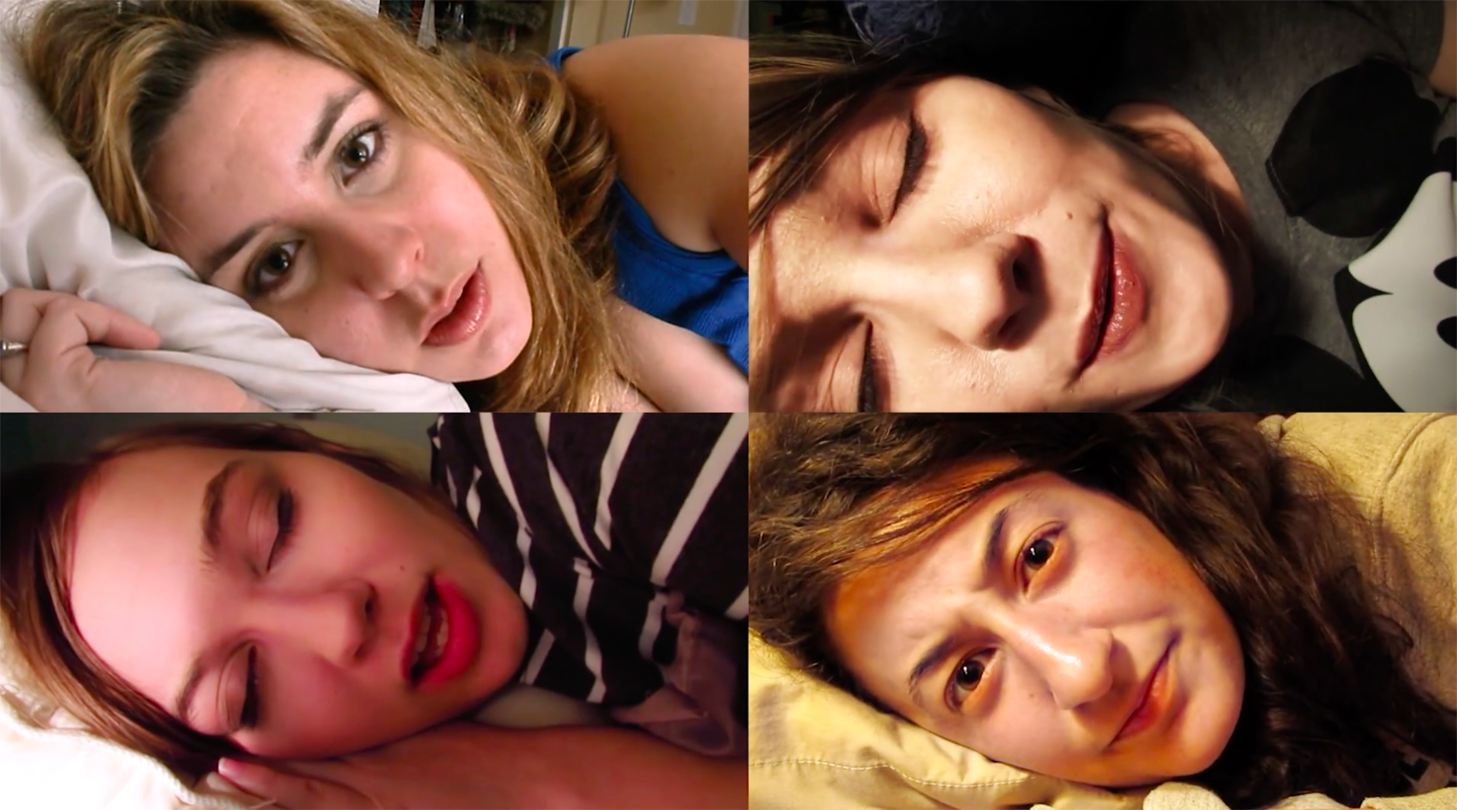This article originally appeared on i-D Netherlands
“The first time I watched a ‘ASMR Girlfriend Roleplay’ video it made my hair stand up on the back of my neck,” says Guus Voorham, a Dutch filmmaker from Rotterdam. He devoted his graduation film to this specific YouTube genre. The videos are a variation on the popular ASMR genre, they’re usually made by young women and provide certain visual and auditory stimuli that give people who are sensitive to it an enjoyable sensation.
In the ‘Girlfriend Roleplay’ branch of ASMR girls film themselves while they are pretending to talk to their boyfriends. They whisper comforting words to the camera, act out domestic quarrels and gently pet the screens. In some cases scoring them over a million views. “When I accidentally discovered these videos I found them uncomfortable, but secretly, I enjoyed them too,” says Guus. He then clipped parts of the videos from different girls into one new girlfriend who met all his wishes.
The 27-year-old filmmaker graduated last July from the Willem de Kooning Academy, the art school of Rotterdam. While studying, he was fascinated by role-playing. To better understand the distinction between fact and fiction he took classes in philosophy and gender studies. For his first big film project he asked volunteers and university fraternity members to act out a hazing ritual. “I wanted to show the viewer that even during role-play, real friendships can develop,” says Guus. His fascination with the difference between real and fake also led him to an extensive research of loneliness, which, he says, is increasingly considered to be a health problem in the Netherlands.
An example of a Girlfriend Roleplay video:
In Alone Together both of the Guus’ infatuations are joined together. “First I wanted to expose the negative side of the phenomenon, because I thought the women abused the loneliness of men. They can make a lot of money doing it,” says Guus. “But when I started editing I also noticed the sweet and beautiful sides to doing this. I emphasised with people whom I thought I would never be able to understand. To me, this is one of the greatest things about making documentaries.”
One of the videos moved him in particular. “The video of a young blond girl, who is also in my film. She tells you how much you mean to her, and she plays it very convincingly,” says Guus. “I imagine that when she recorded it, all alone in her room, she was really thinking of a an ex-boyfriend. Maybe she says all the things in the video she wasn’t able to tell him. A few of the women really seem to play out their own fantasy.”
There are, Guus says, also women who think of it as an act of altruism, to combat loneliness. But in the end the role-play videos resemble a commercial product, most of all. “The makers of these videos are competing for viewers, and they are trying to excel in pleasing,” he says. “They don’t want to make just one person happy, like in a relationship, but they are trying to make all of their viewers happy. Because of this, all the video’s look alike, which then creates the image of an average man, whom the all of the girls are comforting in the same way.”
Guus wants to magnify this homogenization by turning the spectator into an unwilling opponent. “Especially in an auditorium this feels absurd. These women are all trying to create a one-on-one connection with you, whilst all these strangers are sitting next to you. It both makes you uncomfortable, and prevents you from looking away from the screen. At the end of the film the people leave the auditorium looking like they were just kissed by someone against their will.”
Part of the discomfort may be caused by the old-fashioned way the young women portrayed, they are only on the screen because they are trying to please an imaginary man. Many of the videos start with a shot in which the girl is pretending to sleep, and then slowly but gently wakes up. “Sorry, I fell asleep while I was waiting for you. It doesn’t matter you are late, I’ll always be there for you,” they whisper to the camera. Instead of showing you a nuanced picture on modern-day relationships, they dumb down the idea of ‘the girlfriend’ to an eternally youthful girl that has nothing better to do than hang around at home, waiting for her man. This way they reinforce an ancient pattern of expectation.
What the women think about this themselves, does not become clear in the documentary. This is why Guus plans to make a sequel, in which he will let the women behind the videos explain their motives. “I think many of them will tell us that the role they play has nothing to do with their own life,” says Guus. But even if the women don’t identify with the role, it does feel real for the spectator. This is conformed by the many comments underneath the videos left by men who feel supported by them. It were these many positive reactions that changed the way Guus views intimacy. “I thought intimacy was something that, by definition, you could only feel for someone you know well. When you’re having sex, intimacy is what is missing when you don’t really know the other person. But now it seems that the people watching these videos also experience intimate trust and recognition. To them it’s something that can exist between two people who have never met each other. That’s really fascinating.”
You can read more about ‘Alone Together’ here .
